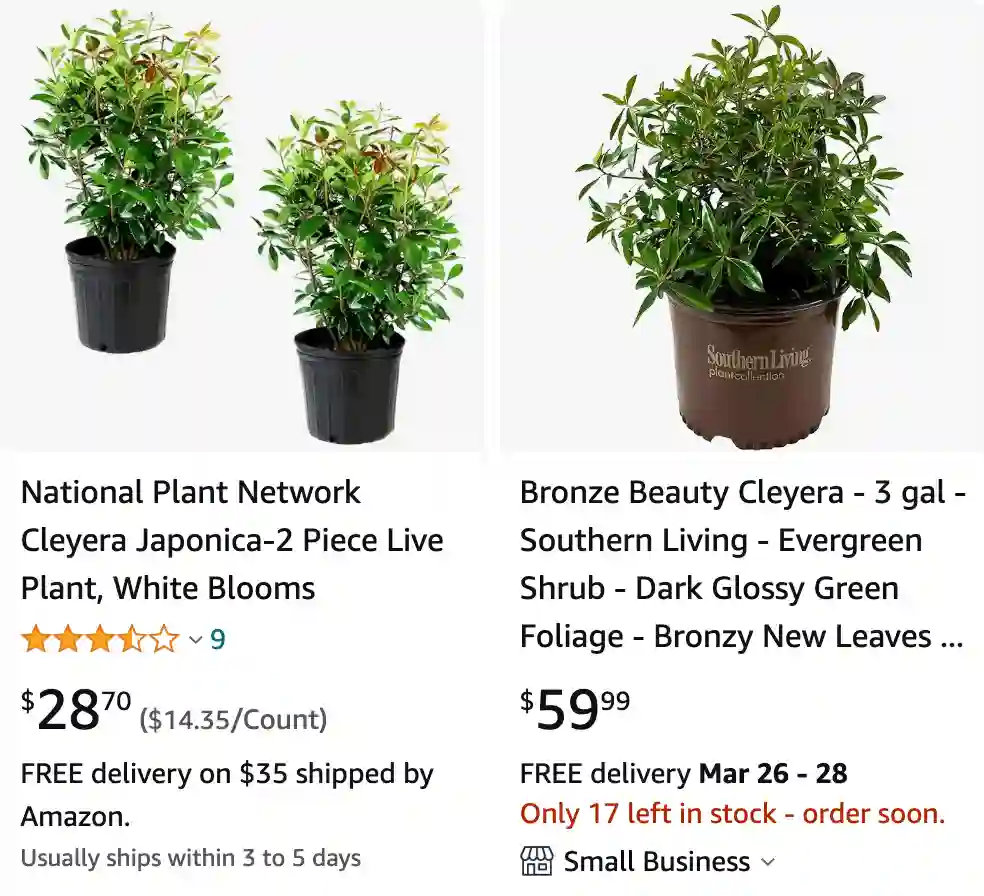

Are cleyera poisonous to dogs?
Cleyera, also known as Japanese cleyera, is not listed as toxic to dogs, but it’s always wise to monitor pets around plants and avoid allowing them to ingest any part of the plant. While cleyera is generally considered safe, some dogs may have sensitivities or allergies to certain plants, so it’s essential to take precautions to prevent ingestion.
Can cleyera grow in shade?
Yes, cleyera can grow in shade, although it typically prefers partial shade to full sun. In shady conditions, cleyera may have slightly slower growth and less dense foliage compared to plants grown in brighter light, but it can still thrive with proper care and maintenance.
Do deer eat cleyera?
In general, deer tend to avoid eating cleyera, making it a good choice for landscapes where deer browsing is a concern. While no plant is entirely deer-proof, cleyera’s leathery, glossy leaves and sometimes bitter taste make it less palatable to deer compared to other garden plants. However, individual experiences may vary depending on local deer populations and food availability.
How far apart to plant cleyera?
When planting cleyera, spacing will depend on the desired density of the hedge or screen you’re creating. Typically, cleyera is spaced about 4 to 6 feet apart when used as a hedge or screen, but you can adjust the spacing to suit your preferences and growing conditions. Closer spacing will result in a denser hedge more quickly, while wider spacing may require more time for the plants to fill in.
How fast do cleyera grow?
Cleyera plants generally have a moderate growth rate, typically reaching their mature size of 6 to 10 feet in height and width within a few years under ideal growing conditions. With proper care, including regular watering, fertilizing, and pruning, cleyera can establish quickly and provide a lush, green backdrop in the landscape.
How to prune cleyera?
To prune cleyera, start by removing any dead, damaged, or diseased branches, making clean cuts just above a healthy bud or lateral branch. You can also thin out congested areas to improve air circulation and light penetration throughout the plant. Additionally, you can selectively prune to shape the plant or control its size as needed. Pruning is best done in late winter or early spring before new growth begins.
Is cleyera an evergreen?
Yes, cleyera is an evergreen shrub, meaning it retains its foliage year-round, providing year-round interest in the landscape. Its glossy, dark green leaves add texture and color to the garden, making it a popular choice for hedges, screens, and foundation plantings.
When to prune cleyera?
The best time to prune cleyera is in late winter or early spring before new growth begins. This allows the plant to recover from pruning and put energy into producing new growth during the growing season. Avoid pruning cleyera in late summer or fall, as this can stimulate new growth that may be susceptible to frost damage in colder climates.
Do cleyera have suckers?
While cleyera plants do not typically produce suckers, they may occasionally send up shoots from the base of the plant or along the roots. These shoots can be removed by pruning them back to the base of the plant or digging them up if they’re emerging from the roots. Regular maintenance, including pruning and monitoring for suckers, can help keep cleyera plants looking tidy and healthy.



